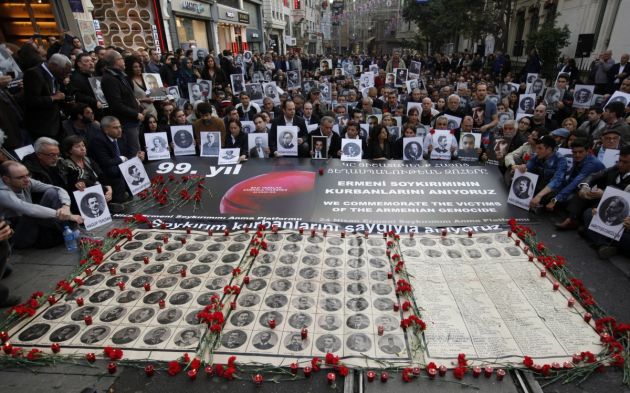Armenian Church seeks to reclaim historic HQ from Turkey

Lawyers for the Armenian Church have started the groundwork for the Catholicosate of the Great House of Cilicia to reclaim its historic headquarters in Turkey, from where they were forced to flee in 1921.
The Catholicosate's legal team filed a brief before the Turkish Constitutional Court on April 28 to start a lawsuit that seeks the return to the Armenian Church of key properties seized following the Armenian genocide of 1915.
The lawsuit has the blessing of Catholicos Aram I, the leader of the Armenian Catholicosate of Cilicia, who spearheaded a committee that studied the case from 2012.
"Convinced that recognition of the Genocide and compensation should go together, His Holiness Aram I ... has filed a lawsuit at the Turkish Constitutional Court for the return of the Spiritual Center of the Catholicosate in Sis (now Kozan in modern-day Turkey)," read a statement from the Armenian Church's website.
"In initiating this effort, His Holiness is setting a precedent for the descendants of the martyrs to reclaim their family belongings," it added.
The lawsuit was timed for the centenary of the Armenian Genocide, where an estimated 1.5 million Armenians were killed by the ruling Ottoman empire as they were driven away from parts of modern-day Turkey.
Turkey denies that the killing of up to 1.5 million Armenians in what is now Turkey, at the height of World War One, constitutes genocide.
The commemoration of the event has drawn the attention of different world leaders, like Pope Francis who branded the incident as genocide. Turkish authorities took offense at Francis' remarks.
The brief specifically asked the Constitutional Court to recognize that the church's spiritual center had been located in Sis, the former capital of the Kingdom of Cilicia from 1295.
Following the genocide, the Ottoman authorities ordered Catholicos Sahak II Khabayan and the clergy to leave Sis in two days.
Church leaders were left with no choice but to leave their spiritual center, taking with them only small liturgical objects.
The Armenian Church follows an orthodox tradition and is a member of the World Council of Churches which represents more than 500 million Christians.
